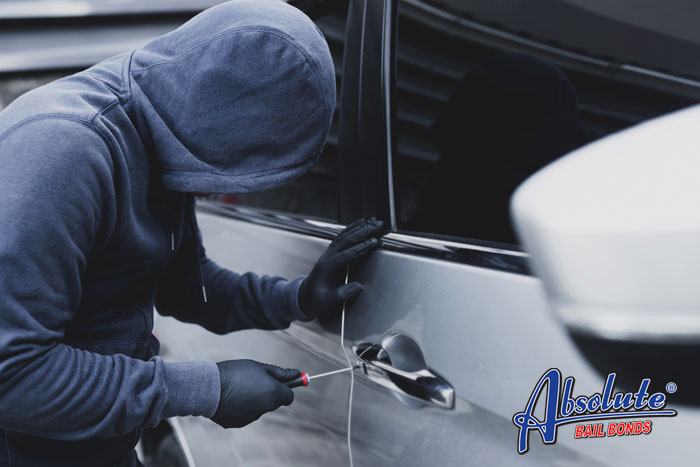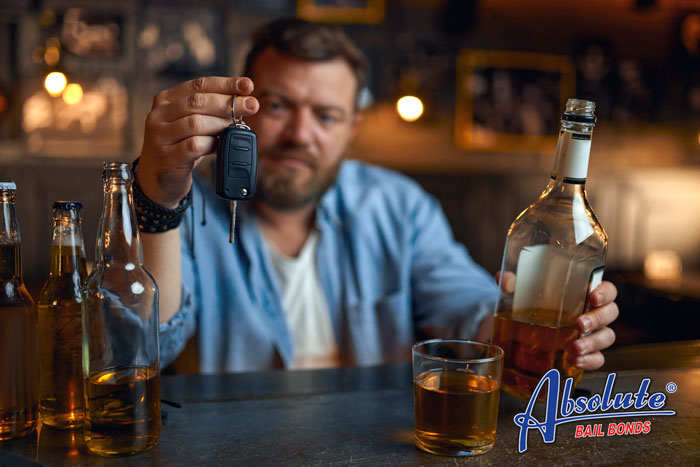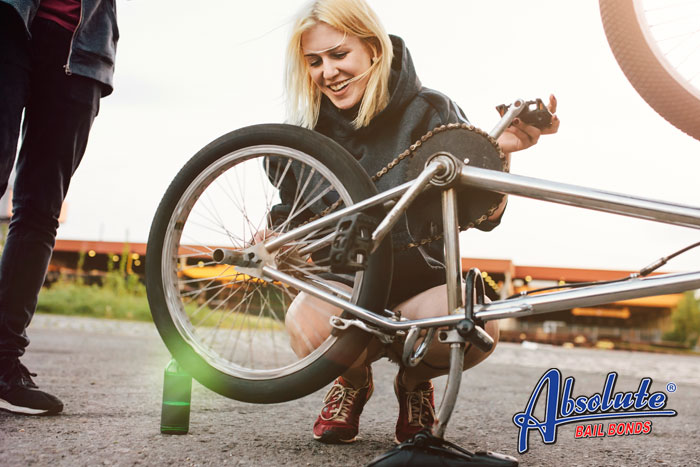
The Purpose of Proposition 47
The purpose of Proposition 47 is to make some changes to felony sentencing laws.
Proposition 47 officially became law in 2014. At the time it had the distinction of being one of the biggest changes to laws to alter the ability for convicted felons to receive housing, admittance into the workforce, and other issues that had previously made it impossible for them to enjoy a quality life after they served their sentence. The way this was done was taking non-violent felony convictions and turning them into misdemeanors. The hope was that by lowering the barriers convicted felons faced when they were released from prison, they would be better able to become a useful member of society and be less likely to return to a life of crime.
When Proposition 47 became law, it was estimated that over 1 million people living in California would be able to change their non-violent felony conviction records into more socially acceptable misdemeanors.
The three changes the passing of Proposition 47 triggered include:
- Turning some nonviolent theft and drug laws from felonies into misdemeanors
- Allowing anyone currently serving time for a felony that could now be reclassifying to petition the court for a change of sentence
- Allowing individuals who’d completed their sentence for a felony that was now considered a misdemeanor to change their criminal history
While there was a great deal of concern about what would happen once Proposition 47 became law, the impact it has had on California has been mostly positive.
Improved Public Perception
One of the biggest positive changes it made was changing the way the rest of the country perceived California’s judicial and prison situation. When California first passed the three-strikes law, many objections were raised, and several people stated that the three-strike laws proved that there was something inherently wrong with the way California treated criminals.
The passing of Proposition 47 proved to the world that California was prepared to give people a second chance as well as an opportunity at a better life.
Less Prison Overcrowding
Overcrowding in the prisons has been a huge issue for California. The sheer number of people housed in the state’s prisons is not safe. While Proposition 47 hasn’t totally reversed California’s prison overcrowding situation, it has helped.
Better Criminal Rehabilitation
One of the things California lawmakers discovered after they passed the three-strike law was that tougher sentences didn’t really encourage criminal rehabilitation. In some cases, the three-strike laws seemed to make things worse.
When Proposition 47 became law, it allowed some people to be released from prison which created some room in the budget. This extra money has been used to help finance criminal rehabilitation programs.
Schools have Benefited
In 2016 a fund connected to Proposition 47 was started that helped benefit schools throughout California. The funding came in the form of grants that were designed to help reduce the number of truancy issues the schools dealt with on a daily basis. The hope is that the extra funding will decrease the drop out rate. With more children completing high school and able to enter the workforce, hopefully petty crime rates will decrease.
Perhaps the most encouraging thing the state of California has experienced since the passing of Proposition 47 is that there hasn’t been a noticeable increase in violent crime since 2014.

What to Expect if You are Charged with Larceny in California
Larceny is one of the most frequently seen charges in the California court system. The term larceny is a blanket word that’s used for a variety of different thefts. Larceny is used for:
- Robberies
- Carjacking
- Embezzlement
- Burglaries
- Fraud
- Identity theft
- Muggings
- Pickpocketing
Most larceny cases are commonly referred to as grand theft or petty theft.
Since there are so many different types of larceny in California, each case is handled differently. The first thing that happens right before a larceny arrest is the prosecutor deciding which type of larceny the suspect allegedly committed and if they should pursue felony or misdemeanor charges.
Most of California’s larceny charges are wobbler offenses, meaning that they can be handled either as a misdemeanor or a felony. The two major determining factors are the value of the theft and if anyone was injured during the incident.
There’s a major difference in the long-term impact a misdemeanor and a felony will have on your life. Yes, both result in a criminal record, but most of the time a misdemeanor won’t be a major issue whereas a felony can make it difficult to find a job, qualify for housing, and legally own a gun. Getting convicted of misdemeanor grand theft also means a shorter and softer sentence. The sentence for misdemeanor grand theft is a year in a county jail. If you’re convicted of felony grand theft, the sentence is 16 months, 2 years, or 3 years in a state prison.
If a firearm is involved in a larceny case, the charges will always be handled as a felony. In many cases, additional charges are included. Each of these separate charges will likely impact the severity of your sentence.

Is Skipping School A Crime?
As a parent, you constantly worry about whether you’re raising your child in a way that will enable them to be an independent, self-sufficient, responsible adult. You know that a big part of this process sometimes involves stepping back and letting them do their own things, especially once they become teenagers. It’s likely you understand that part of this means accepting that they will sometimes do things you won’t approve of, including occasionally skipping school.
The problem is that it has recently come to your attention that there are some things your teenage child can do that results in you getting in as much trouble as your child. This new knowledge has you wondering if skipping school is a crime and if it is, can the police come after you?
The way California law is currently set up, all children who are between the ages of six and eighteen are expected to attend public school, private school, or be home-schooled by their parents. Some exceptions are made for children who have severe special needs which make it impossible for them to receive an education.
The failure to attend school or regularly skipping school is a crime in California. It is also a crime that will significantly impact the parents of the truant child.
Just how many absences does it take before your child is considered a truant? Far fewer than you likely think. At this point, the way the law is written, if your child has three or more absences that exceed a period of thirty minutes, they can be considered truant. Your child will become what is considered chronically tardy if they miss five or more days of school.
The good news is that it’s unlikely the cops will knock on your door after your child has been late for school for the third time this year. Even if they skipped an entire day’s worth of school three times, it’s unlikely that you, the parent will face any consequences, though your child will likely get into trouble and have to scurry to make up for the work they missed.
If your child continues to skip school and you are unable to provide an extremely good explanation for their absences (such as severe health problems that are being treated by a doctor and make it impossible for your child to attend school) you will find yourself facing legal consequences. The law usually gets involved when your child misses about 10% of the school year.
The legal consequences parents face when their child routinely skips school are quite severe. The judge will want to take a long look at why your child is skipping school and what steps you’ve taken to discourage the practice. If the court finds that you failed to do everything in your power to encourage your child to attend school, you’ll be fined $500.
The situation goes from bad to worse if it’s determined that not only did you fail to compel your child to attend school but that you actually contributed to their delinquency. In this situation, you could be fined up to $2,000 and/or be sentenced to a full year in jail. In cases that involved children between the grades of kindergarten and eighth grade, the fine can be as large as $2,500.
In California, chronically skipping school is a crime and as a parent, you could face serious consequences because of your child’s decision to skip school.

Providing False Credit Card Information
There are times when we could all use a little extra money. Adding an additional line of credit to our lives seems like a good way to get it. The problem is that if you’re already overstretched, the credit card companies will likely reject your application. This can prompt some of us to consider providing false credit card information.
Before you start to provide someone with false credit card information you should know about Penal Code 484f PC. This is the law that outlines the consequences of providing false credit card information in California.
The law states: “(a) Every person who, with the intent to defraud, designs, makes, alters, or embosses a counterfeit access card or utters or otherwise attempts to use a counterfeit access card is guilty of forgery.
(b) A person other than the cardholder or a person authorized by him or her who, with the intent to defraud, signs the name of another or of a fictitious person to an access card, sales slip, sales draft, or instrument for the payment of money which evidences an access card transaction, is guilty of forgery.”
If you think providing false credit card information is something that only happens when people lie on credit card applications, you’re wrong. While there are lots of people who do lie when they apply for credit cards, there are many different ways a person can violate the law.
Examples of providing false credit card information include:
- Creating fake debit/credit cards
- Using a friend/family member’s credit card without first getting their permission
- Providing a store with a fake credit card number
- Doing something to alter the numbers on a credit/debit card
Providing false credit card information is a wobbler offense. The circumstances surrounding the incident and the amount of money involved are used to determine if you’ll be charged with a misdemeanor or a felony. If you’re convicted of misdemeanor falsifying credit card information, the maximum sentence is one year in jail and restitution. In felony cases, the maximum sentence is three years in prison.
In most cases, providing false credit card information is just one of the charges you’ll have hanging over your head. Additional charges usually connected to this type of crime usually include forgery, petty theft, stealing a credit card, etc.

Graduation Parties and Underage Drinking
Finally! It’s graduation season. For many students and parents, this is a day they’ve been waiting for their entire lives. They’re finally putting high school behind themselves once and for all and allowing themselves to focus on the future.
If you’re a graduating senior or someone who just likes to hang out with a group of senior friends, remember that while you’re allowed to have a good time and enjoy life, you aren’t legally allowed to consume alcohol in California. The fact that you’ve graduated from high school doesn’t matter. In California, you’re not allowed to drink until you turn 21. Getting caught consuming alcohol at a graduation party prior to your 21st birthday can have an immediate negative impact on your future.
One of the first things you need to realize is that you don’t have to be caught actually drinking in order to get into trouble for consuming alcohol when you’re still underage. If you’re surrounded by beer bottles, have a drink in your hand, or simply drank a little bit, you’re still going to be in trouble with the law. California has a zero-tolerance policy when it comes to minors and drinking.
The consequences of getting caught drinking at a graduation party while you’re a minor are both scary and expensive. In most cases, the judges will order you to pay fines and do substantial community service. In some situations, especially if this isn’t the first time you’ve been caught drinking while still a minor, the judge will decide that you should spend some time in jail.
You’re bad decision to drink at a friend’s graduation party even though you were a minor will likely result in you losing your driving privileges for a time. It doesn’t matter that you were smart enough to avoid driving after you were drinking. If you’re caught buying alcohol, using a fake ID to get alcohol, or being in possession of alcohol, your driver’s license will likely be suspended. Not only does this mean you have to beg for a ride whenever you want to hang out with friends, but it also makes getting a summer job more difficult. When you are finally able to drive again, you’ll likely have to pay a significantly higher insurance premium.
An increasing number of colleges are starting to crack down on minors who get caught with alcohol. There have even been reports of scholarships being withdrawn and application approvals getting rescinded.
Considering the long-term impact a single drink can have on your future, it’s in your best interest to avoid alcohol this year while you’re celebrating graduations.

Are DUI Sobriety Checkpoints Legal in California?
No one likes DUI checkpoints. Not only do they make many of us nervous, even when we haven’t been drinking. There’s just something about getting caught in a checkpoint and seeing a police officer walking towards us that tends to activate a guilt complex, they also drastically extend the length of time it takes you to get from Point A to Point B.
As irritated as you might be that you were caught at a DUI checkpoint, you shouldn’t expect the state to stop using them anytime soon. The purpose of the checkpoints is to reduce the annual number of deaths and injuries that are the direct result of drunk driving incidents. As long as the checkpoints continue to catch drunk drivers, they will remain an issue you’ll have to deal with when driving in California.
Many people have protested that DUI checkpoints are illegal, that they’re a form of entrapment. The issue has even made it all the way to both the California and Federal Supreme Courts, who ruled that the checkpoints were legal. There are some rules that they must follow when the highway patrol sets up a California DUI checkpoint. These rules include:
- Arranging things so only the supervising officers are in charge of operational decisions;
- Establishing a completely neutral criteria for drawing motorists into the checkpoint.
- Making sure the checkpoint is set up in a location where the supervising officers can reasonably expect drunk drivers to pass-through
- The checkpoint is safe and all safety protocol is being followed
- The is sufficient evidence that the checkpoint will catch some drunk drivers
- That the checkpoint is organized in such a way that each person is detained for as short a period of time as possible
- Roadblocks are used to publicly announce the presence of DUI checkpoint
If you’ve never been caught at a California DUI checkpoint, it can be a bit overwhelming. The good news is that the checkpoint should be set up in such a way that it’s easy for you to grasp what you’re supposed to do.
When set up correctly, roadblocks are used so that vehicles slowly merge together before coming to a complete stop. One of the officers will approach your car and request the same material that they ask for during a routine traffic stop: driver’s license, proof of insurance, registration. What is a little different is that the officer will be intent on your behavior and will likely spend a little time chatting with you. They really aren’t interested in what you have to say, but rather how you say it and your overall behavior. They’re using the few moments of conversation to decide if you’ve been drinking.
Indicators the officer uses to decide if they should do a full sobriety test include:
- Fumbling
- The smell of alcohol
- Lack of focus
- Slurred speech
- Watery eyes
- Jittery behavior
- Shaking hands
The other thing the officer will do is a quick scan of the interior of your car. They’re looking for things like open containers, drug paraphernalia, and other signs that you were drinking (or consuming drugs) before and/or while you’re driving. The entire experience usually lasts about 30 seconds.
As a rule, the officers usually ignore passengers while they’re questioning the driver. This could change if the passenger acts like they are intoxicated. During a checkpoint, the officers do have the right to question anyone who is in the car, if they feel that the passenger represents a safety hazard to themselves, or the driver, the officer will have to decide how they should proceed. If there’s evidence that the passenger is under the influence of illegal drugs, they may decide to arrest the passenger. If you’re the passenger during a DUI checkpoint, it’s in your best interest to stay quiet.

Misusing a Disability Placard in California
Disability placards aren’t something everyone in California can appropriate and use for their own purposes. Getting caught misusing a disability placard in California can land you on the wrong side of the law.
If you think you can misuse a disability placard and not get caught, you should think again. It’s easy for police to spot placard misuse. When they discover someone is misusing the placards, the police are usually quick to take action.
Disability placard misuse is dealt with in Vehicle Code 4461 VC. The law has multiple examples of how disability placards are not to be used. One such example is, “A person shall not lend a certificate of ownership, registration card, license plate, special plate, validation tab, or permit issued to him or her if the person desiring to borrow it would not be entitled to its use, and a person shall not knowingly permit its use by one not entitled to it.”
Other ways a disability placard can be misused include:
- Continuing to use a disability placard that has expired or that has been revoked
- Borrowing someone’s vehicle and using their placard even though you’re not disabled and they aren’t in the vehicle with you.
One could consider California’s Vehicle Code 4461 VC to be one of California’s wobbler laws, but instead of shifting between a felony and a misdemeanor, it could be handled as an infraction or a misdemeanor.
A majority of cases involving the misuse of a disability placard are handled as an infraction. This is good news since there is no jail time, only a fine. That being said the fine can be really steep. The amount can range from $250 to $1,000.
If the case is handled as a misdemeanor, jail will be one of the possible consequences. The maximum sentence is six months in jail and/or a fine that could be as large as $1,000. In some situations, the judge will order misdemeanor probation rather than sending the defendant to jail. It’s also possible that the defendant will have to perform some type of community service and/or seek counseling.
The good news is that you’ll have nothing to worry about provided you are in legal possession of a disability placard and are good about making sure it never expires.

What are Considered Attempted Crimes in California
We’ve all heard stories about people who are charged with attempted crimes such as attempted murder, attempted assault, or attempted burglary. While we’re familiar with the concept of attempted crimes, few of us fully understand how it’s possible to be charged and even convicted, of a crime that didn’t actually happen.
The issue of attempted crimes in California is discussed in Penal Code 664 PC. The law defines attempted crimes as any instance when a person makes a concentrated effort to pull off an actual crime and break the law. The fact that the intent was real, even if the person failed to completely follow through in their attempt to break the law.
The law specifically states that “every person who attempts to commit any crime, but fails, or is prevented or intercepted in its perpetration, shall be punished where no provision is made by law for the punishment of those attempts.”
There are several examples of attempted crimes. These examples include:
- A victim escaping and fleeing from a sexual assault scenario
- Breaking into a house, but being stopped before anything is actually stolen
- A gun backfiring during what would have been a murder
The interesting thing about the way California handles attempted crimes is how the sentencing is handled. The rule of thumb for attempted crimes in California is that the maximum sentence for a guilty conviction will be one-half of the maximum sentence had the accused been able to complete their crime.
Composing a successful attempt for attempted crimes in California generally depends on how much evidence the police have gathered, the type of attempted crime the accused is facing, and how close they came to committing the crime.
Some successful defenses that have been used in the past include:
- That while the accused may have considered the crime, there is no evidence that they would actually carry through with it
- The accused was framed
- The accused didn’t realize that they were about to break the law
Whether the attempted crime is handled as a misdemeanor or a felony depends on how the charges would have been handled had the law actually been broken. This means that there are both misdemeanor and felony attempted crime cases going through the California legal system all the time.
While some maintain that it’s unreasonable to charge and convict people of attempted crimes in California, there is little chance that things will change any time soon. California lawmakers hope that by continuing to pursue attempted crime cases they will:
- Discourage people from breaking the law
- That people realize that there are consequences for actions, even if the actions aren’t fully carried through
The best way to make sure you’re never charged with an attempted crime in California is by never even planning a hypothetical crime.

What Happens if You Hurt Someone in a Drunk Driving Accident?
Driving while drunk isn’t just frowned upon in California, it’s illegal. While you’re allowed to go out and have a good time, if that good time involves drinking alcohol, you need to pay careful attention to how much you consume. As soon as your blood alcohol level reaches 0.08%, you’re no longer legally allowed to drive.
What Happens if You Get Caught Drunk Driving in California?
Don’t assume that just because you’ve never had a drunk driving offense that you have nothing to worry about the first time you’re charged with drunk driving in California. Even though it’s your first offense, it’s still going to have a massive impact on your immediate future.
First the fines. California law is written in such a way that in addition to being required to pay anywhere from $390-$1,000 in fines, you can also pay something that’s called penalty assessments.
Once you’re convicted of first-time drunk driving the judge has the option of sentencing you to jail time. This is in addition to the fines. While there’s no mandatory jail time for a first-time drunk driving conviction, the judge could decide that you need to spend 48 hours to 6 months in jail.
Plan on losing your driving privileges. As soon as you’ve been officially convicted of your first DUI, your license will be suspended for six months. If you refused to submit to a bloc alcohol concentration test, an administrative license suspension could also be enforced which would mean losing your license for a full year.
What Happens if Someone is Injured Because you Were Driving Drunk in California
There’s no way of getting around the fact that if you injure someone while you’re driving drunk, you’ll face far more serious consequences for your actions than if you’re simply pulled over. How severe those additional consequences depends on several different factors including:
- If you have a previous history of DUI
- How severely injured the victim is
- Additional circumstances surrounding the incident
In California, DUIs that involve injuries are treated as wobblers, meaning they can be handled as either a misdemeanor or a felony. If the circumstances surrounding the incident indicate that your case is a felony, you could be sentenced to up to four years in prison and be required to pay a maximum fine of $5,000.
In addition to facing criminal charges, you’ll also likely be named the defendant in a civil case. During the civil case, your victim will seek financial compensation for both their medical expenses and their emotional/physical pain and suffering.
Considering the negative impact a DUI has on your life, it’s in your best interest to always have a designated driver whenever you go out and drink.

Riding Your Bike Under the Influence of Drugs or Alcohol
The rising fuel costs are causing many of us to take a second look at our bikes. Now they not only seem like a pleasant way to stay in shape but also a viable way to ease transportation costs. Not only can you use your bike to get from your home to your workplace, but you can also use it to go out at night. Not paying for gas means you’ll have more money in your pocket for drinks, and since you’re cycling rather than driving you don’t have to worry about watching how much you drink.
California law prohibits you from driving and cycling while under the influence of drugs and alcohol.
California is so serious about making sure that you don’t bike while under the influence that they created an entire law that deals with anyone who is under the influence when they mount their bike.
The law is California Vehicle Code 21200.5 VC and it states that:
“Notwithstanding Section 21200, it is unlawful for any person to ride a bicycle upon a highway while under the influence of an alcoholic beverage or any drug, or under the combined influence of an alcoholic beverage and any drug. Any person arrested for a violation of this section may request to have a chemical test made of the person’s blood, breath, or urine for the purpose of determining the alcoholic or drug content of that person’s blood pursuant to Section 23612, and, if so requested, the arresting officer shall have the test performed.”
The good news is that while the law prohibits you from cycling while under the influence (CUI) the fallout from doing so is nowhere near as life-altering as getting a DUI.
When you’re charged with a CUI you will only face misdemeanor charges. If you’re convicted of CUI in California you won’t spend any time in jail and the maximum fine you’ll face is $250.
While the potential fallout from a CUI isn’t as severe as what you’d get if you were convicted of a DUI, that doesn’t mean you shouldn’t take the situation seriously. The first issue is that you will have a criminal record that shows an alcohol-related offense.
The second thing to consider is that if you’re cycling under the influence and accidentally hurt someone you will face additional legal and civil penalties that could have a long-term negative impact on your life.
While it’s okay to go out and have a good time, when all is said and done, it’s better to have a designated driver than to cycle home after an evening of fun and drinks.

